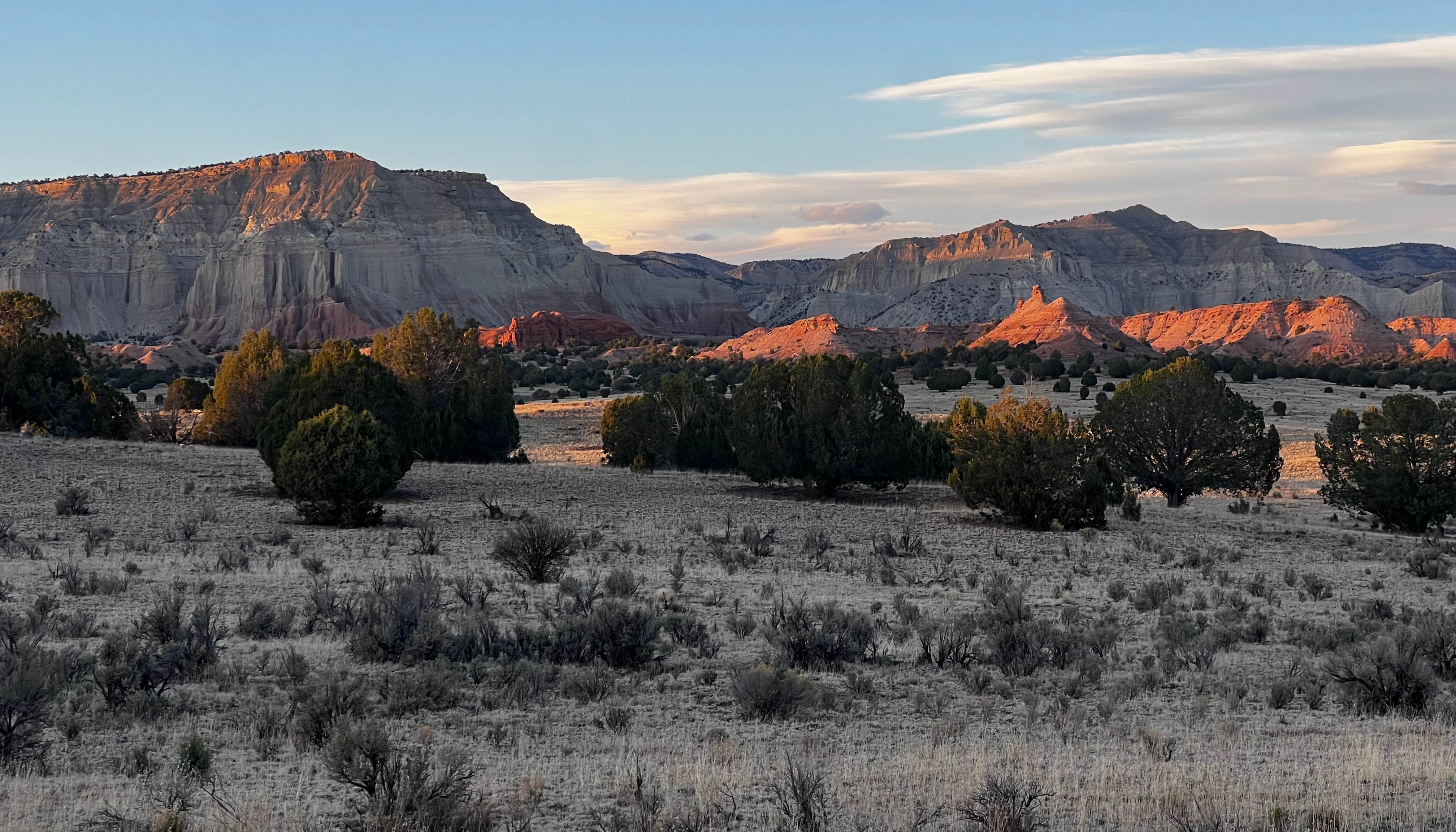Capitol Reef National Park Camping Guide
Capitol Reef National Park offers a more intimate camping experience than many larger parks, with only one developed campground (Fruita) and two primitive campgrounds inside its boundaries. Fruita Campground's shaded oasis amid historic orchards sits at the heart of the park, while Cathedral Valley and Cedar Mesa campgrounds provide remote, no-frills sites in the desert backcountry. All Fruita campsites are by reservation only and book up months in advance during the busy season, reflecting the park's rising popularity. The two primitive campgrounds are free and first-come, first-served, often requiring high-clearance vehicles to reach. Outside the park, campers will find abundant options on surrounding public lands and in nearby communities, ranging from dispersed BLM sites under starry skies to full-service RV parks in Torrey. Here's everything you need to know about planning, booking, and enjoying a Capitol Reef camping trip.
Capitol Reef National Park Camping at a Glance
All Capitol Reef campgrounds now require reservations for Fruita during peak season, with the reservation window opening 6 months in advance. The park's only developed campground often fills within minutes of availability opening. For 2025, Fruita Campground remains 100% reservable year-round with no first-come, first-served sites. The two primitive campgrounds (Cathedral Valley and Cedar Mesa) operate as free, first-come, first-served sites accessible to those with high-clearance vehicles.
Sites at Fruita Campground cost $25 per night (50% off with Senior/Access Pass). The primitive campgrounds are free but lack amenities like water and flush toilets. Fruita operates year-round, while access to Cathedral Valley and Cedar Mesa depends on road and weather conditions. Summer days reach 85-95°F with cooler nights in the 55-65°F range, so pack layers even in warm months.
Capitol Reef National Park Campground Quick Facts
| Quick Facts | Details |
|---|---|
| Number of Campgrounds | 3 campgrounds (1 developed frontcountry, 2 primitive backcountry) within park |
| Total Campsites | Approximately 82 sites in total. Fruita Campground: 71 sites (Loops A, B, C) Cathedral Valley: 6 sites; Cedar Mesa: 5 sites |
| Campsite Costs | Fruita Campground: $25 per night (50% off with Senior/Access Pass) Cathedral Valley & Cedar Mesa: Free (no nightly fee) |
| Reservation Platforms | Recreation.gov for Fruita Campground (6-month rolling window) Primitive campgrounds are first-come, first-served (no reservations) |
| Camping Seasons | All park campgrounds open year-round (access to primitive sites depends on road/weather conditions) Peak season from March through October; quieter in winter |
| Temperature Ranges | Summer: Days 85-95°F, Nights 55-65°F Spring/Fall: Days 60-75°F, Nights 30-45°F Winter: Days 30-50°F, Nights 15-25°F (occasional snow) |
| 2025 Updates | Fruita Campground remains 100% reservable year-round (no first-come sites) High demand continues in spring and fall - book early or have backup options ready |
Capitol Reef Campgrounds: Complete Guide
Developed Campground (Fruita District)
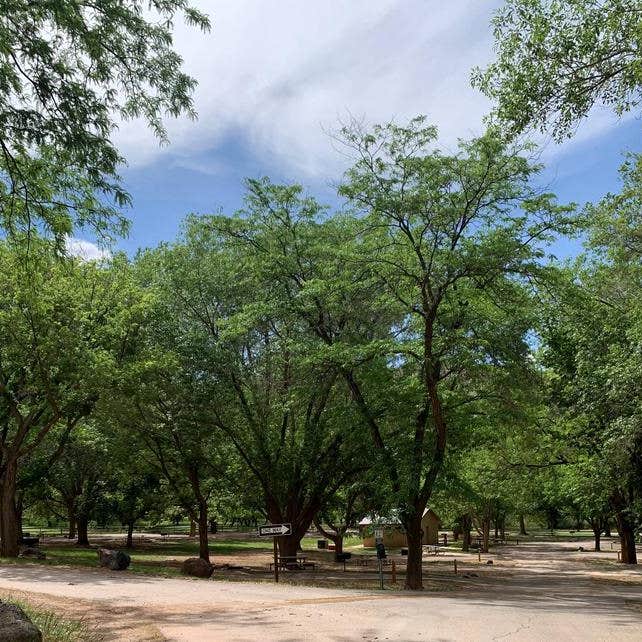
Fruita Campground — Capitol Reef National Park
Fruita Campground is the only developed campground in Capitol Reef, centrally located near the visitor center along the Fremont River. Its 71 sites are spread across three loops beneath large shade trees and historic fruit orchards. All sites have picnic tables and fire rings, with drinking water, flush toilets, and a seasonal dump station available. No RV hookups or showers are provided. RVs up to around 40 feet can be accommodated in some sites (no hookups). This campground is ideal for families and first-time visitors, offering easy access to popular trailheads, the paved drive, and Fruita's Gifford House store and museum.
Primitive Campgrounds (Remote Backcountry)
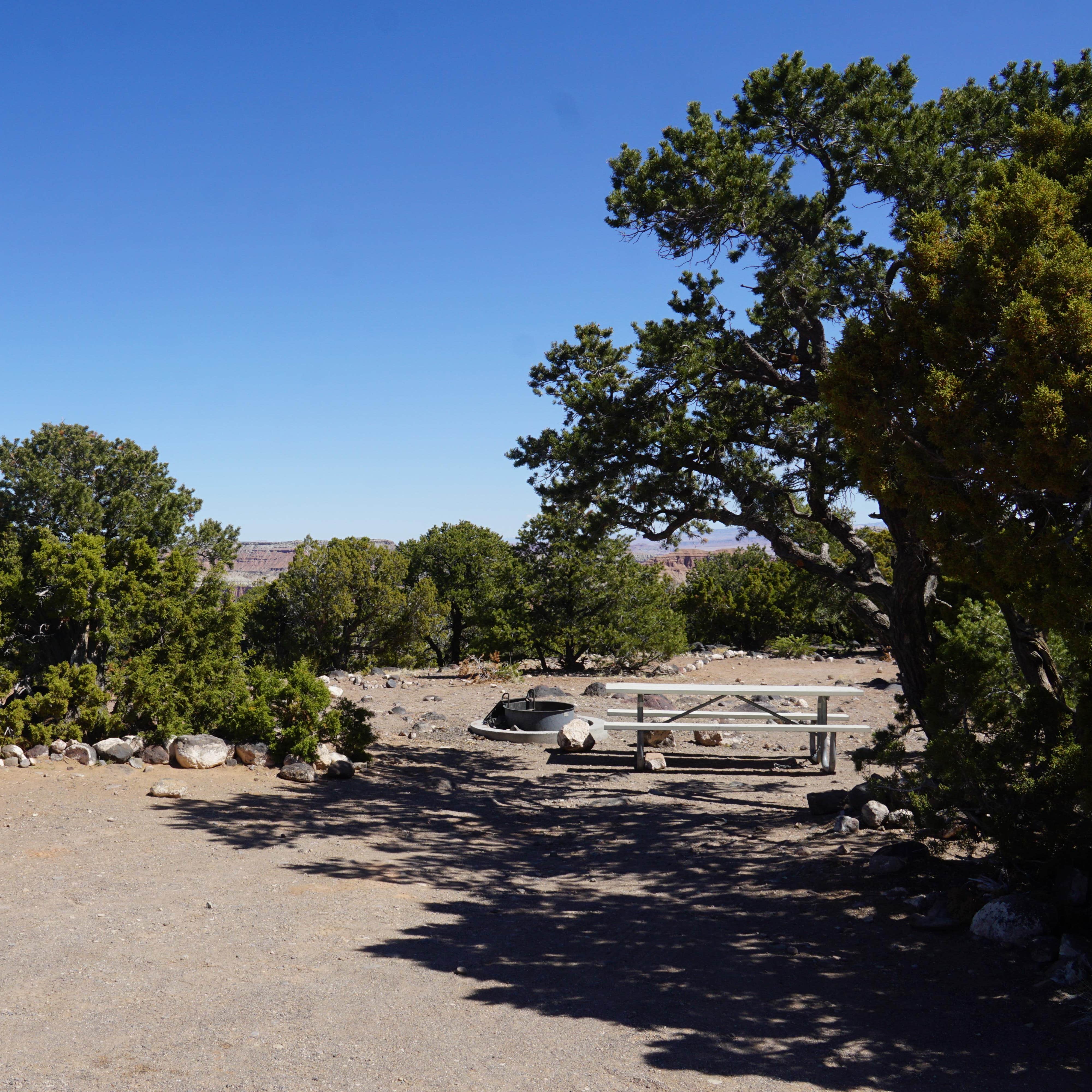
Cathedral Valley Campground — Capitol Reef National Park
Cathedral Valley Campground is a primitive, no-fee campground in the remote northern section of Capitol Reef. Its 6 sites sit at 7,000 feet amid the iconic monoliths of Cathedral Valley. Accessible via long unpaved roads (high-clearance recommended, and a river ford if coming from the south), the campground offers only basic amenities: picnic tables and a single vault toilet. No water is available, so campers must bring plenty. The reward for the rough journey is profound solitude, dark night skies, and a basecamp next to spectacular formations like the Temple of the Sun and Temple of the Moon.
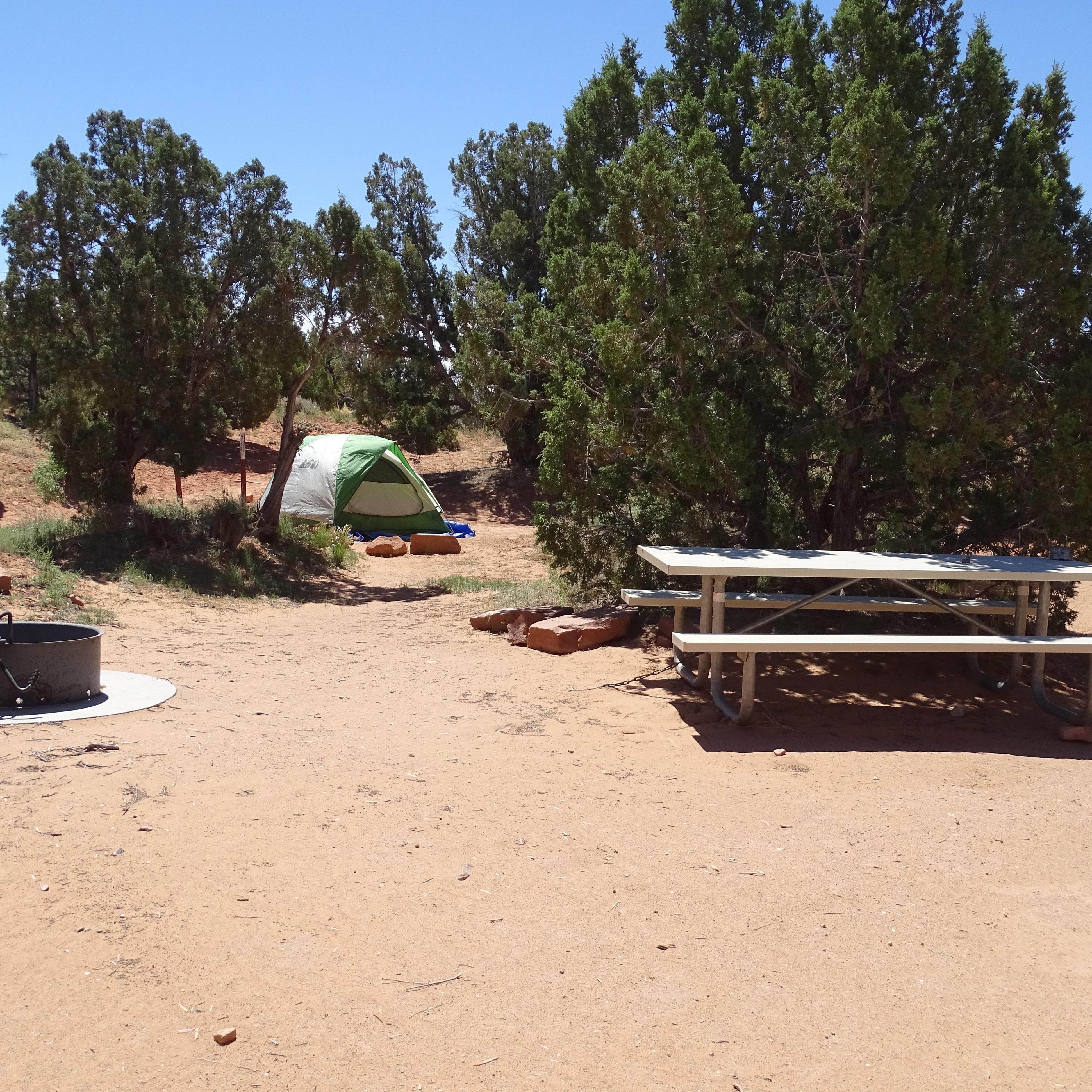
Cedar Mesa Campground — Capitol Reef National Park
Cedar Mesa Campground is a small primitive campground located in the less-visited southern Waterpocket District of Capitol Reef. It has 5 first-come sites at 5,600 feet elevation, each with a picnic table and fire ring near towering red rock cliffs. A vault toilet is provided, but no water or other services (pack in all water). Reaching Cedar Mesa involves a 23-mile drive down the unpaved Notom-Bullfrog Road (high-clearance 2WD usually sufficient in dry weather). The campground's remote setting offers exceptional quiet and stargazing. It's an excellent spot for campers wanting solitude, short hikes to features like Red Canyon, and a free campsite within the park.
Camping Near Capitol Reef National Park
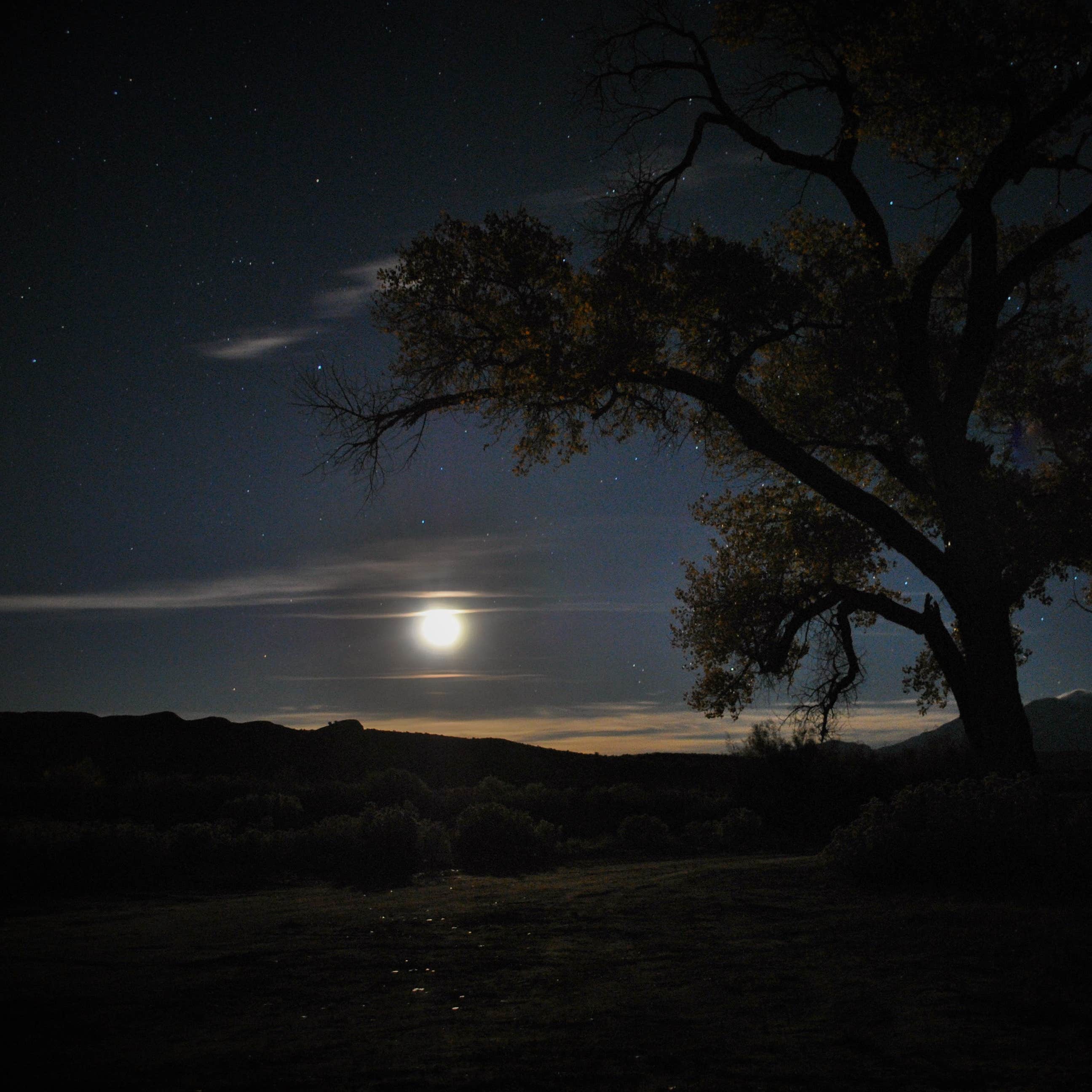
Capitol Reef National Park Dispersed Camping
Capitol Reef National Park Dispersed Camping refers to the numerous free campsites on Bureau of Land Management (BLM) land just outside the park. These undeveloped sites have no amenities (no water, toilets, or tables) but offer incredible freedom and views. Common areas include pull-outs along Highway 24 near the park's west entrance and along Notom-Bullfrog Road on the east side. Campers must be self-sufficient and follow Leave No Trace practices. Dispersed sites are suitable for tents or RVs (small rigs recommended on rougher roads). This option works well when arriving without reservations or looking for a zero-cost, star-filled camping opportunity near the park.
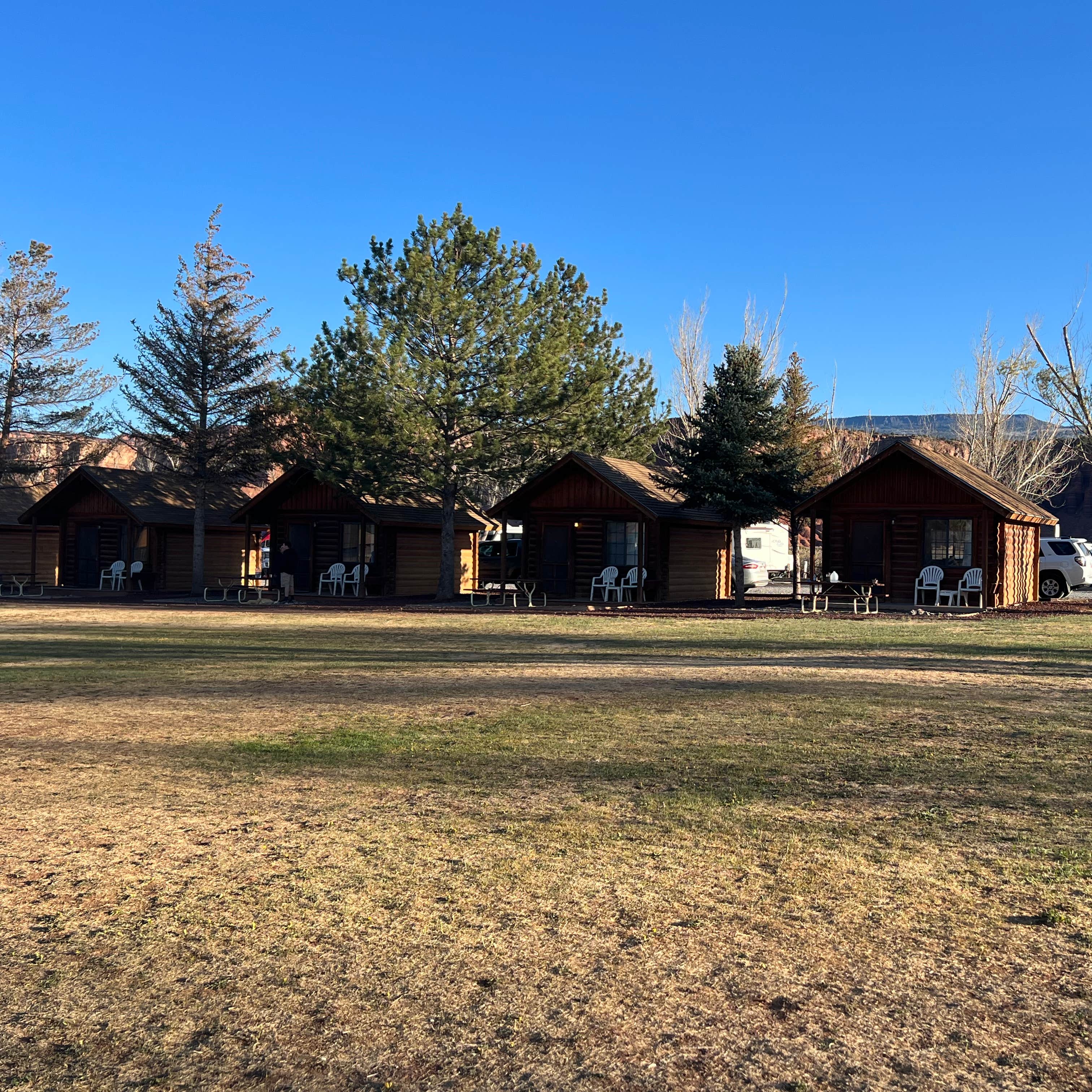
Thousand Lakes RV Park
Thousand Lakes RV Park is a privately owned campground in Torrey, about 15 minutes west of Capitol Reef. It features full RV hookups, tent sites, and a few cabins, all set against a backdrop of red rock cliffs and distant mountain peaks. Amenities include hot showers, flush toilets, WiFi, a swimming pool (in summer), and even an on-site cafe serving breakfast and dinner. The park is 'big rig friendly' with pull-through sites and a dump station, making it popular for RV travelers. While sites are close together with limited shade, campers praise the friendly staff, clean facilities, and beautiful sunset views. It's an ideal base camp for exploring Capitol Reef while enjoying modern comforts.
Campground Comparison Table
| Campground | Location & Sites | Cost & Reservations |
|---|---|---|
| Fruita Campground | Central Fruita District (near Visitor Center) 71 sites (mixed tent/RV loops) | $25 per night Reservations via Recreation.gov (6 months out) |
| Cathedral Valley | Cathedral Valley (north end of park) 6 primitive sites | Free (no fee) First-come, first-served |
| Cedar Mesa | Waterpocket Fold (south end of park) 5 primitive sites | Free (no fee) First-come, first-served |
| Fruita Group Site | Fruita area (near campground) 1 group site (up to 40 people) | $125 per night Reservations via Recreation.gov (12-month window) |
| Dispersed BLM Camping | Outside park boundaries (various BLM lands) Unlimited sites (no facilities) | Free No reservation required |
Campground Amenities and Best Uses
Fruita Campground (Frontcountry): Fruita is the park's main campground and best for visitors wanting convenience and amenities. It offers lush shade and grass (a rarity in the desert) thanks to surrounding orchards, plus close proximity to trailheads and the visitor center. Every site has a picnic table and fire ring, and the flush restrooms and water spigots make it comfortable for families and RV campers (dump station on-site). Fruita is ideal for first-time park campers, those with larger RVs (though no hookups), and anyone who wants to stroll to the Fremont River or historic Gifford House for fresh pie each day.
Primitive Campgrounds: Cathedral Valley and Cedar Mesa campgrounds cater to self-sufficient adventurers looking for solitude. Both are free and rarely fill, making them great options for last-minute campers with the right vehicle. Cathedral Valley Campground sits near impressive rock monoliths and is perfect for stargazers and photographers (zero light pollution). Cedar Mesa offers quiet base camping for hikes in the southern Waterpocket Fold and feels a world away from civilization. Primitive sites have no water or services, so they're best for tent campers or van campers who come prepared with supplies and high-clearance transportation.
Nearby Alternatives: Outside the park, campers will find options to suit every style. National forest campgrounds like Sunglow provide cooler temperatures, natural scenery, and amenities like flush toilets - a nice middle ground if Fruita is full. Private Capitol Reef RV parks in Torrey (such as Wonderland RV Park or Thousand Lakes) work well if you need full hookups, showers, and WiFi; they serve as comfortable basecamps while exploring the park by day. Meanwhile, dispersed BLM camping near Capitol Reef just outside Capitol Reef is a favorite for budget-minded and last-minute travelers - you can pull off on public land and camp for free under incredible stars, so long as you're fully self-contained and practice Leave No Trace.
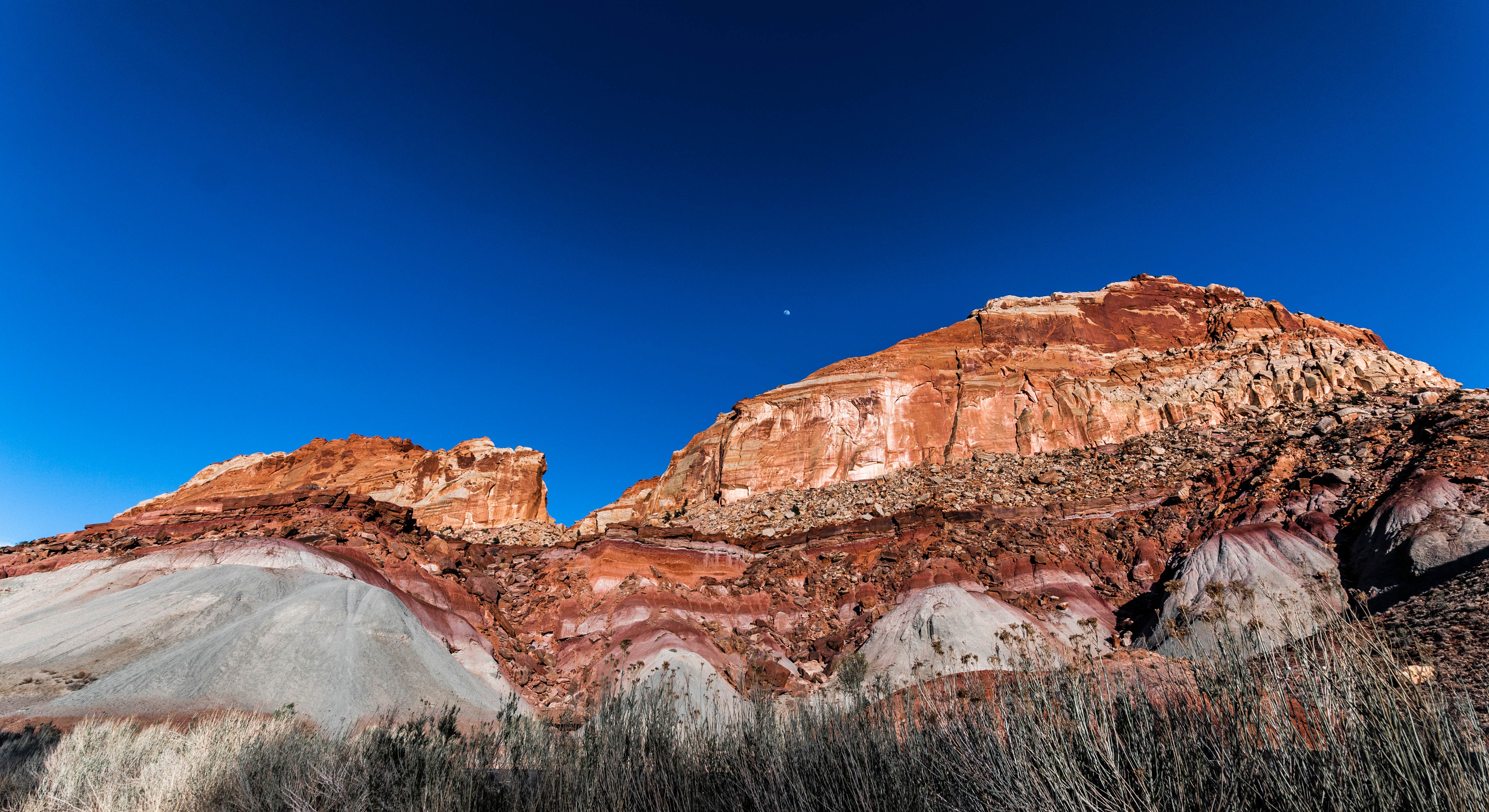 Photo by Tim D
Photo by Tim D
Planning Your Capitol Reef Camping Trip 
When to Visit
| Season | Temperatures | Camping Conditions |
|---|---|---|
| Spring (March-May) | Days: 60-75°F Nights: 30-45°F | Wildflowers bloom; mild days and chilly nights Fruita Campground fully opens by March; peak crowds by April Unpaved roads can be muddy from spring rains/snowmelt |
| Summer (June-August) | Days: 85-95°F Nights: 55-65°F | All campgrounds accessible; longest daylight hours Very hot midday sun - seek shade and stay hydrated Afternoon monsoon storms possible in July-August (flash flood risk in canyons) |
| Fall (September-October) | Days: 65-80°F early fall, 50-65°F by late Oct Nights: 25-45°F | Superb camping weather; crisp air and fall colors (cottonwoods turn gold) Crowds thin after Labor Day; Fruita sites easier to reserve mid-week Freezing nights common by October; water may be shut off at season's end |
| Winter (November-February) | Days: 30-50°F Nights: 15-25°F (sub-zero possible) | Very low visitation - often have Fruita Campground nearly to yourself No reservations needed (plenty of availability); primitive sites accessible weather permitting Cold nights and occasional snow; some facilities (Gifford House, etc.) closed for season |
Spring (March-May):
Spring brings wildflower displays and pleasant daytime temperatures to Capitol Reef, making it one of the most popular times to camp. By late March, blooming desert wildflowers carpet the park in yellows, purples, and reds. The historic orchards around Fruita bloom spectacularly in April (peach and apple blossoms), creating a fragrant oasis. Daytime temperatures climb into the comfortable 60-75°F range, perfect for hiking without extreme heat. Nights remain chilly, often dropping to freezing, so bring warm sleeping gear rated to at least 20°F.
Spring sees increasing visitation as word spreads about Capitol Reef's beauty, and by April, Fruita Campground books solid most weekends. Weekdays offer slightly better availability. Book your reservation exactly when the window opens (6 months in advance) for best selection. Spring also brings variable weather - occasional rain or even late snow at higher elevations. The unpaved roads to Cathedral Valley and Cedar Mesa can become impassable mud after storms, so check conditions at the visitor center before attempting backcountry access.
Summer (June-August):
Summer brings long daylight hours and full access to all areas of Capitol Reef, including the remote backcountry campgrounds. Daytime temperatures soar into the 85-95°F range (sometimes higher), making shade essential during midday hours. The Fruita Campground's tree cover becomes invaluable - sites in shaded areas can be 10-15 degrees cooler than exposed spots. Nights cool pleasantly to 55-65°F, comfortable for sleeping in lightweight bags or even just a sheet. July and August bring the summer monsoon season, characterized by dramatic afternoon thunderstorms. These storms provide spectacular lightning shows and brief cooling relief but also pose flash flood dangers in slot canyons and narrow washes. Never hike in narrow canyons when storms threaten. Summer camping at Capitol Reef tent sites requires sun protection, abundant water (at least a gallon per person per day), and flexibility to adjust plans during afternoon storms.
Despite the heat, summer remains popular for family camping when school is out. Fruita Campground stays booked most nights, though dispersed camping options outside the park provide reliable backup. Cathedral Valley and Cedar Mesa campgrounds rarely fill even in summer, offering solitude if you're willing to make the drive.
Fall (September-October):
Fall ranks as many campers' favorite season at Capitol Reef. After Labor Day, crowds diminish significantly while weather remains superb. September maintains summer-like temperatures with slightly cooler days (65-80°F) and comfortable nights. By October, temperatures drop further (50-65°F days, 25-45°F nights), bringing crisp autumn air and the need for warmer sleeping gear. The cottonwoods along the Fremont River and in Fruita's orchards turn brilliant gold in late October, creating excellent photo opportunities. The orchards also offer fruit picking season - apples ripen in September and October, and visitors can pick fruit for a small fee. The harvest season adds a special dimension to camping at Fruita.
Fall sees reduced visitation, especially mid-week, making it easier to secure Capitol Reef camping reservations on shorter notice. Check cancellations regularly if your desired dates show full initially. Be aware that by late October or early November, Fruita Campground may shut off water to prevent freeze damage, switching to winter operations mode. Facilities remain open, but you may need to bring water from town.
Winter (November-February):
Winter transforms Capitol Reef into a quiet, contemplative landscape. Visitation drops to its lowest levels, and you may have Fruita Campground nearly to yourself on weekdays. The park waives the reservation requirement in winter, operating Fruita as first-come, first-served (though you can still reserve if you prefer). Availability is typically excellent except possibly around holiday weekends. Winter days range from cold (30-40°F) to surprisingly mild (45-55°F) when the sun shines. Nights drop to 15-25°F regularly, with occasional cold snaps bringing sub-zero temperatures. Snow falls intermittently, usually melting within days on the valley floor but lingering longer on the plateaus. The red rock cliffs dusted with snow create extraordinary scenery. Winter camping requires serious cold-weather gear: sleeping bags rated to at least 0-10°F, good insulation beneath your sleeping bag, and layers for the temperature range. Some facilities close for winter - Gifford House, for instance, operates only seasonally. However, the visitor center remains open (though with reduced winter hours), and the campground's flush toilets and water remain operational unless extreme cold forces temporary shutdowns.
Winter hiking can be excellent when roads are clear and weather stable. Trails see almost no traffic, and the low sun angle creates dramatic lighting on the cliffs. Just be prepared for icy trail sections and bring traction devices. The Cathedral Valley and Cedar Mesa roads often become impassable in winter due to snow or mud, so focus on Fruita-area attractions during this season.
Capitol Reef Reservation Systems Explained
Securing a Capitol Reef campsite requires understanding the straightforward reservation process for Fruita and the first-come approach for primitive sites:
Fruita Campground Reservations use Recreation.gov exclusively. The reservation window opens exactly 6 months in advance at 10:00 AM Mountain Time. For example, to camp on July 15, you'd need to book on January 15 at 10:00 AM MT. Popular dates (weekends from March through October) fill within minutes of becoming available, while weekdays and winter dates may stay available longer.
To maximize your chances of securing a Fruita reservation:
- Create your Recreation.gov account well before booking day and save payment information
- Log in several minutes before 10:00 AM MT and have your desired dates queued
- Be flexible with dates and loops if possible - Loop C tends to fill slightly slower than A and B
- Have backup dates ready in case your first choice sells out
- Consider mid-week arrivals rather than weekends
- Check for cancellations regularly, especially 7-14 days before your trip when cancellation deadlines pass
Group Campground at Fruita has a separate Capitol Reef group campsite that accommodates up to 40 people for $125 per night. This site has a 12-month advance booking window instead of 6 months, allowing groups to plan further ahead.
Primitive Campgrounds (Cathedral Valley and Cedar Mesa) operate on a pure first-come, first-served basis with no reservations possible. These campgrounds rarely fill, even on holiday weekends, but getting there requires:
- High-clearance vehicles (4WD recommended for Cathedral Valley; 2WD high-clearance often sufficient for Cedar Mesa in dry conditions)
- Self-sufficiency (bring all water, food, and supplies)
- Checking road conditions at the visitor center before attempting access
- Daylight arrival recommended for finding sites on unfamiliar roads
Winter Modifications: From approximately November through February, Fruita Campground switches to first-come, first-served operation, though reservations remain available through Recreation.gov if you prefer to reserve ahead. Winter availability is typically excellent except possibly around Thanksgiving and Christmas holidays.
Capitol Reef NP Campground Costs and Budgeting
| Campground Type | Nightly Cost | Key Features |
|---|---|---|
| Fruita Campground | $25 per night $12.50 with Senior/Access Pass | Flush toilets, drinking water, dump station, fire rings, picnic tables, no hookups |
| Fruita Group Campground | $125 per night | Accommodates up to 40 people, includes parking area, picnic tables, and fire rings |
| Cathedral Valley Campground | Free | Primitive: vault toilet, picnic tables, no water, first-come first-served |
| Cedar Mesa Campground | Free | Primitive: vault toilet, picnic tables, fire rings, no water, first-come first-served |
| Dispersed BLM Camping | Free | No facilities, self-sufficient camping on public lands near park |
Additional Fees and Budget Tips
Park Entry Fees: Capitol Reef National Park entrance fee costs $20 per vehicle (valid for 7 days) or $35 for an annual Capitol Reef pass. The America the Beautiful Pass at $80 annually covers all national parks and is worthwhile if visiting multiple parks. Note that accessing the Fruita area, visitor center, and campground doesn't require paying the entrance fee - it only applies if you drive the Scenic Drive south of the campground or access certain backcountry roads.
Service and Facility Fees: No showers exist at Fruita Campground. Private campgrounds in Torrey charge $3-5 for showers if you're not staying there. Firewood costs $8-10 per bundle at stores in Torrey (you cannot gather firewood in the park). Ice costs $3-5 per bag. The dump station at Fruita is included with your camping fee. Historic fruit picking at Fruita orchards costs about $1-2 per pound of fruit picked (seasonal - typically cherries in June, apricots in July, apples in September-October).
Budget-Friendly Alternatives: The primitive campgrounds (Cathedral Valley and Cedar Mesa) are free if you have a suitable vehicle. Dispersed camping around Capitol Reef on BLM land outside park boundaries is also free and abundant. Consider visiting in winter when availability is excellent and you may spend less on ice/cooling needs. The nearby town of Torrey has a few budget motels that may cost less than $80 per night in winter if you need a break from camping.
Fuel and Supplies: Budget significantly for fuel if planning to drive backcountry roads - the Cathedral Valley Loop, for instance, is about 60 miles of slow dirt-road driving. Gas in Torrey and nearby towns costs 10-20% more than urban areas. Stock up on groceries before arriving, as Torrey's small stores have limited selection and higher prices. The nearest major grocery store is in Richfield (about 75 miles west) or Green River (about 80 miles east).
Essential Gear for Capitol Reef Camping
Packing smart for Capitol Reef will keep you comfortable in an environment of extremes - intense sun, potential flash floods, and big temperature swings. Here's the key gear to bring:
Shelter & Sleeping:
- Sturdy tent with a full-coverage rainfly (winds can kick up suddenly, and summer storms bring rain)
- Ground tarp/footprint for your tent (protects against rocky or thorny ground)
- Sleeping bags rated to ~20°F for spring/fall (nights can dip below freezing)
- For summer, a 30-40°F sleeping bag or lightweight quilt (you can always unzip if it's warm)
- Sleeping pads or air mattresses for comfort on the hard desert ground (plus repair kit for air pads)
- Extra blankets or an insulated sleeping bag liner in case of unexpected cold snaps
Water & Kitchen Setup:
- Large water containers (Capitol Reef is dry - aim for capacity of 4-5 gallons in camp; you can refill at Fruita spigots or bring from town)
- Water filtration or purification tablets if backpacking (natural water sources are scarce, but treat any found water from streams)
- Camp stove with plenty of fuel (assume you cannot rely on campfires for cooking due to fire bans or lack of wood)
- Cooler with ice to store food (block ice or frozen water jugs last longer in the desert heat)
- Food storage: sturdy plastic bins or coolers that latch - to keep rodents, chipmunks, and insects out of your provisions
- Cooking gear: pots/pans, utensils, plates, and a can opener - plan simple meals as there are no onsite food services
- Biodegradable soap, wash basin, and sponge for dishwashing (do all washing at least 200 feet from water sources and use designated dump sinks if available)
Clothing & Sun Protection:
- Lightweight, light-colored long sleeves and long pants for sun protection during the day (UPF-rated clothing is ideal)
- Wide-brimmed hat (essential - desert sun is intense year-round)
- Good quality sunglasses with UV protection (the bright desert light can cause eye strain)
- Sunscreen (SPF 30 or higher, and reapply often - high elevation increases UV exposure)
- Layering pieces for temperature swings: fleece or puffy jacket for chilly mornings/evenings even in summer
- Sturdy hiking boots with ankle support and good tread (the slickrock and rocky trails demand quality footwear)
- Camp shoes or sandals for wearing around the campsite (give your feet a break from boots)
- Warm hat and gloves for spring, fall, or winter camping (nights are cold)
- Rain jacket and rain pants (summer monsoons can arrive suddenly)
Safety & First Aid:
- Comprehensive first aid kit including blister treatment, pain relievers, antihistamine, bandages, antiseptic
- Any prescription medications you need (plus a few extra days' supply as backup)
- Insect repellent (mosquitoes and biting flies can be present near water sources in spring/summer)
- Basic repair kit for gear: duct tape, needle and thread, tent pole repair sleeve, etc.
- Headlamp or flashlight per person with extra batteries (campsite paths can be dark at night)
- Multi-tool or pocket knife (useful for gear repairs, cutting rope, opening packages, etc.)
- Duct tape (wrap a few feet around a water bottle or trekking pole for quick fixes on tents, hoses, etc.)
- Paracord or nylon cord (10-20 feet for clothesline, gear tie-downs, or emergency use)
- Fire extinguisher (small camp-sized one or at least a gallon of water always on hand when you have a fire)
- Whistle (each hiker should have one - three blasts is the universal distress call)
- Emergency bivvy/shelter or space blanket (lightweight insurance if someone gets stranded or cold on a hike)
Vehicle-Related (Especially for Backcountry Roads):
- Spare tire (inflated) and car jack/tire iron
- Jumper cables or jump-starter
- Basic tool kit for auto (screwdrivers, pliers, wrench)
- Tire repair kit/air compressor if you plan backroad travel
- Extra fuel (consider carrying 5-10 gallons if exploring remote areas like Cathedral Valley)
Navigation & Information:
- Printed park map (available at visitor center, or download from NPS website)
- Printed reservation confirmation
- Offline maps on phone (cell service is limited or non-existent in much of the park)
- Personal locator beacon or satellite messenger (optional, but valuable for remote backcountry where no cell coverage exists)
- Binoculars (to view wildlife like bighorn sheep on distant cliffs, or to stargaze)
- Star chart or stargazing app (nights are remarkably dark - Capitol Reef is a Dark Sky Park)
Miscellaneous & Comfort:
- Camera or smartphone for photos (Capitol Reef is incredibly photogenic; bring extra memory card or battery bank)
- Marshmallows, graham crackers, and chocolate (s'mores ingredients - a camping classic)
- Cards, books, or games for downtime (long summer evenings are great for relaxation)
- Cash (small bills for Fruita's Gifford House pie shop and produce stands that operate on honor system)
- Earplugs (if you're a light sleeper - though Capitol Reef is generally quiet)
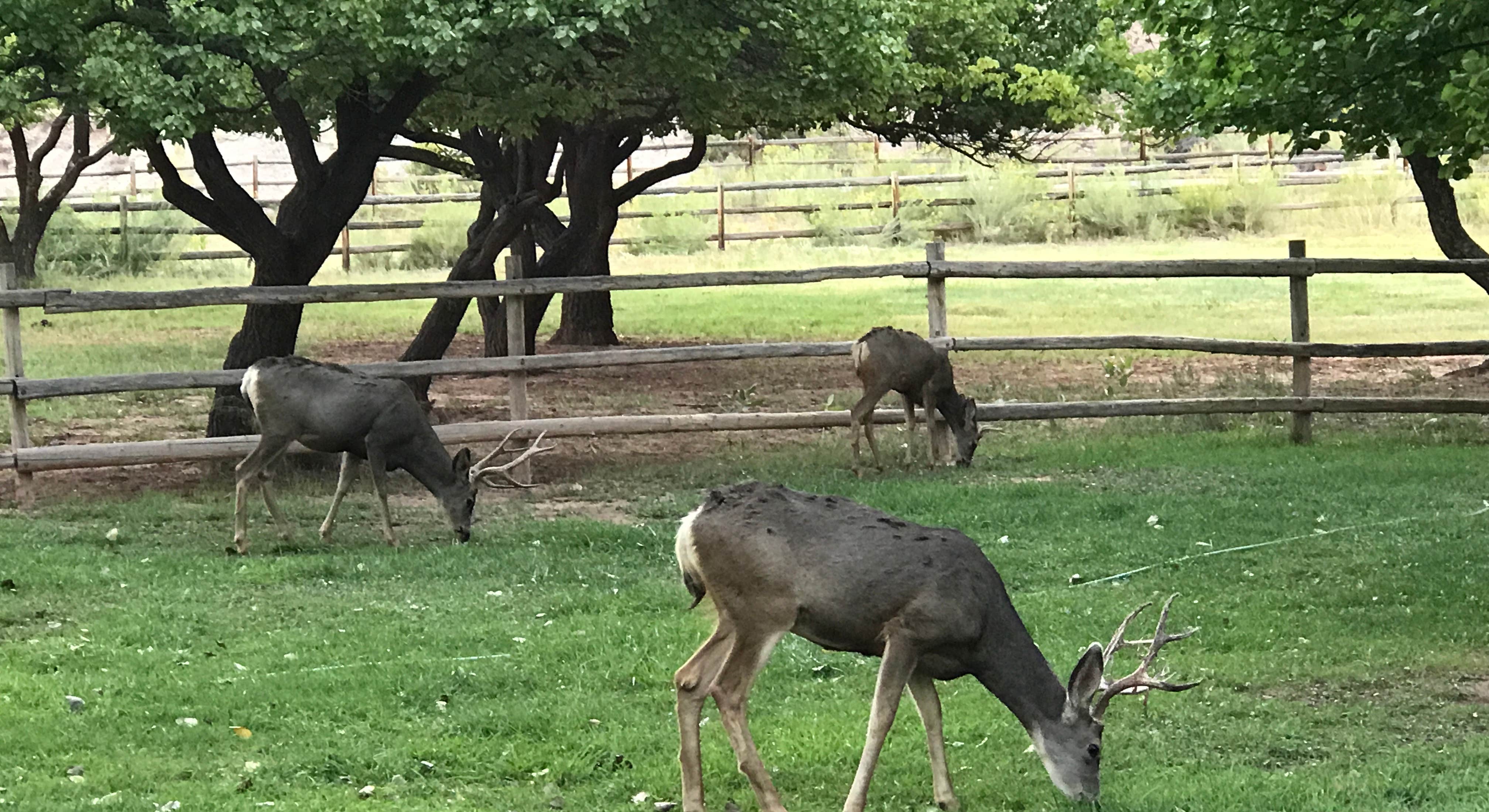 Photo by David R
Photo by David R
Wildlife Safety and Park Regulations 
Wildlife Safety in Capitol Reef
Capitol Reef hosts various wildlife including mule deer, bighorn sheep, mountain lions, coyotes, and many smaller mammals, birds, and reptiles. While wildlife encounters are generally less common than in some other national parks, respecting animals and following safety guidelines creates positive outcomes:
General Wildlife Viewing:
- Maintain a safe distance of at least 50-75 yards from all wildlife
- Never feed any animals (it's illegal and dangerous - even feeding "friendly" deer or chipmunks harms them)
- If an animal changes its behavior because of you, you're too close - back away slowly
- Use binoculars or telephoto lenses to observe wildlife up close while maintaining safe distance
- Store all food, trash, and scented items properly to avoid attracting animals to campsites
Deer and Elk:
Mule deer frequent Fruita Campground, especially in the orchards at dawn and dusk. They appear docile but can become aggressive, particularly bucks during fall rut or does protecting fawns in spring. Keep your distance and never approach for selfies. Deer may carry ticks that transmit diseases, so check yourself and pets after time in tall grass.
Bighorn Sheep:
Capitol Reef is known for its desert bighorn sheep population, often spotted on cliff faces near the Fruita area or along Highway 24. These magnificent animals are typically wary of humans and maintain distance. Observe them with binoculars from roads or trails - do not approach. Their habitat includes steep, dangerous terrain.
Mountain Lions:
Mountain lions inhabit Capitol Reef but are rarely seen due to their elusive nature. If you encounter a mountain lion:
- Do not run - running triggers chase instinct
- Make yourself appear large - raise arms, open jacket
- Maintain eye contact and back away slowly
- If attacked, fight back aggressively (unlike with bears)
- Keep children close and in sight on trails
Snakes and Scorpions:
Midget faded rattlesnakes and other snake species live in Capitol Reef. Most snake encounters occur in warmer months when they sun themselves on rocks or trails. Give snakes wide berth - they will not strike unless threatened. Watch where you place hands and feet when scrambling on rocks. Scorpions are present but rarely encountered - shake out shoes and clothing before wearing if left outside overnight.
Rodents and Chipmunks:
Cute camp visitors like chipmunks, squirrels, and mice can be persistent food seekers. Never feed them. Store all food in sealed containers or your vehicle. Rodents can carry hantavirus and plague, though risk is low with proper precautions. Don't leave food crumbs around your campsite.
Park Regulations and Etiquette
| Regulation Category | Specific Rules | Penalties |
|---|---|---|
| Campfires | Permitted only in designated fire rings at campgrounds Never leave unattended Completely extinguish before leaving Fire restrictions may apply seasonally | Citations starting at $150 Possible campground eviction Liability for wildfire costs |
| Food Storage | Store all food, trash, and scented items in vehicles or sealed containers No food in tents overnight Clean tables and grills after use | Warnings and citations Attraction of wildlife to campground |
| Quiet Hours | 10:00 PM to 6:00 AM strictly enforced Generator hours: 8:00 AM to 8:00 PM (Loop C only at Fruita) | Warnings, then possible eviction |
| Pets | Allowed in campground and on roads only Not allowed on trails, in buildings, or backcountry Must be leashed at all times | Citations for violations |
Additional Park Regulations
Camping Limits: Maximum 8 people per site at Fruita Campground. Maximum 2 vehicles per site (additional vehicles must park in overflow areas). 14-night stay limit per calendar year. Check-in time is 2:00 PM, checkout is 12:00 PM noon.
Backcountry Regulations: Free backcountry camping permits required for overnight stays outside established campgrounds (available at visitor center). Camp at least 0.5 miles from roads and 1 mile from water sources. No campfires in the backcountry - use camp stoves only. Carry out all waste including human waste in sensitive areas.
Protected Resources: Never collect or remove anything from the park - rocks, fossils, plants, antlers, or cultural artifacts. Petroglyphs and historic structures are protected by federal law - look but never touch. Stay on established trails to protect fragile desert soils and cryptobiotic crust (the dark, bumpy soil crust that takes decades to form).
Fruit Picking: Picking fruit from Fruita's historic orchards is allowed when fruit is ripe (typically June through October for various fruits). Pay the self-service fee ($1-2 per pound typically) at honor boxes near orchards. Do not shake trees or damage branches. Stay on the ground - no climbing trees.
Vehicle Use: Drive only on established roads. Off-road driving is prohibited and damages fragile desert ecosystems. Obey posted speed limits (45 mph on Highway 24, slower on park roads and dirt roads). Four-wheel drive is not a permit to drive anywhere - stay on designated routes.
Drones: Launching, landing, or operating drones (unmanned aircraft) is prohibited in all national parks including Capitol Reef. This regulation protects wildlife, visitor experience, and cultural resources.
Beyond the Campground: Activities and Exploration 
Day Trips from Capitol Reef Campgrounds
From Fruita Campground:
The central Fruita location provides easy access to most of Capitol Reef's main attractions. The Scenic Drive extends 8 miles south from the visitor center through the heart of the reef's most spectacular cliffs. The paved road passes towering walls of Navajo sandstone and Kayenta formations, with pullouts for photographs. At road's end, the unpaved Capitol Gorge Road continues 2.5 miles (usually passable for most vehicles in dry weather) to the Capitol Gorge trailhead. Along the way, stop at the petroglyphs panel and the Fruita Schoolhouse (a preserved one-room schoolhouse from pioneer days).
The Gifford House sits walking distance from the campground, offering fresh-baked pies, ice cream, and local crafts in a historic building. Order a slice of pie (the fruit pies use fruit from Fruita orchards) and enjoy it at picnic tables overlooking the red cliffs. The house operates seasonally (typically April through October).
Panorama Point offers a quick drive-up viewpoint about 3 miles west of the visitor center on Highway 24. A short walk leads to sweeping views of Capitol Reef, the Henry Mountains, and Waterpocket Fold. Sunset from Panorama Point is exceptional.
For a longer adventure, drive the Cathedral Valley Loop (60-mile dirt road requiring high-clearance 4WD, full day trip). This spectacular drive through the northern section of the park features imposing sandstone monoliths including the Temple of the Sun and Temple of the Moon. Plan for 4-6 hours driving time plus stops. Check road conditions before attempting.
From Cathedral Valley Campground:
Camping at Cathedral Valley places you amid some of the park's most dramatic features. The Upper Cathedral Valley Viewpoint sits a short drive from the campground, offering panoramic views of the valley's monoliths, the Henry Mountains, and the reef. Dawn and dusk light create magical photography conditions.
Visit the Temple of the Sun and Temple of the Moon, massive freestanding monoliths that tower over the valley floor. These formations are accessible via short walks from pullouts along the loop road. The scale is immense - the Temple of the Sun stands over 400 feet tall.
The Glass Mountain (actually not a mountain but a hill covered in chunks of sparkling selenite crystal) sits along the northern section of the loop. A short walk from the road lets you examine the selenite deposits up close.
For experienced hikers with navigation skills, the Upper South Desert Overlook Trail (unmarked route, about 5 miles round-trip from a pullout) leads to an incredible viewpoint over the South Desert area. Bring a GPS or good map and compass.
From Cedar Mesa Campground:
Cedar Mesa's remote southern location offers access to the park's wild Waterpocket Fold region. The Red Canyon Trail begins right at the campground, offering a 2-mile round-trip hike into a colorful slot canyon. The trail is relatively easy and leads to a hidden slickrock amphitheater - often you'll have it entirely to yourself.
Continue south on Notom-Bullfrog Road another 8 miles to reach the junction with the Burr Trail. Turn west onto the Burr Trail to climb the spectacular Burr Trail Switchbacks, a steep winding road that ascends the Waterpocket Fold (this section is paved but dramatic). From the top, a rough high-clearance road leads 1.5 miles to Strike Valley Overlook, offering panoramic views of the Waterpocket Fold, Capitol Reef, and the Henry Mountains.
Halls Creek Overlook (much further south, 4WD recommended) provides views into a deep desert canyon. The Halls Creek Narrows trailhead at road's end offers all-day hiking through slot canyons for experienced hikers with route-finding skills.
Top Hiking Trails Near Campgrounds
| Trail Name | Difficulty & Distance | Key Features |
|---|---|---|
| Hickman Bridge | Moderate 1.8 miles RT | Popular arch trail off Hwy 24; 133-foot natural bridge, great views of Capitol Dome and river valley |
| Cassidy Arch | Moderate/Strenuous 3.4 miles RT | Steep slickrock hike from Grand Wash up to a massive arch; unique chance to stand on top of the arch |
| Grand Wash (Narrows) | Easy 4.4 miles one-way | Flat walk through a deep sandstone slot canyon; towering walls only 15-20 feet apart at the narrows section |
| Chimney Rock Loop | Moderate 3.5 miles loop | Loop trail starting at Chimney Rock trailhead; panoramic vistas of the Waterpocket Fold, colorful badlands, great for sunsets |
| Fremont River Trail | Moderate 2.0 miles RT | Starts in Fruita Campground; follows the river then climbs to a viewpoint over Fruita orchards; good bird-watching and sunset spot |
| Cohab Canyon | Moderate 1.75 miles one-way | Steep initial climb, then shaded canyon walking; connects to overlooks of Fruita valley and Highway 24; can link to other trails |
Trail Access and Starting Points
From Fruita Area: The Hickman Bridge Trailhead is located 1.5 miles east of Fruita Campground on Highway 24, just past the petroglyph panel turnout. There's a paved parking area that fills quickly by mid-morning. The trail starts by crossing the river on a footbridge and then ascends moderately to the stone arch. The Fremont River Trail begins within Fruita Campground (Loops A & B), making it perfect for an evening hike from your campsite. The Cohab Canyon Trail starts across from the campground near the Fruita picnic area parking.
Along the Scenic Drive: Cassidy Arch is accessed via the Grand Wash trailhead, about 3.5 miles down the paved Scenic Drive (then 1.3 miles on a dirt spur road into Grand Wash). The Capitol Gorge Trail starts at the end of the Scenic Drive/Capitol Gorge Road, offering an easy walk through a narrow canyon with historical signatures and petroglyphs visible on walls.
Along Highway 24: The Chimney Rock Loop trailhead sits directly off Highway 24 about 3 miles west of the visitor center. A dirt parking area near the prominent Chimney Rock formation marks the start. The Sunset Point Trail (easy 0.6 miles round-trip) offers another quick Highway 24 option for dramatic viewpoints.
Water Activities in Capitol Reef
In this arid park, "water activities" are limited compared to parks with large lakes, but the presence of the Fremont River and seasonal water features still provide opportunities:
Fishing:
The Fremont River flowing past Fruita Campground contains fish (primarily brown trout and some rainbow trout, typically smaller specimens). A Utah state fishing license is required - no special park permit needed beyond that. Catch-and-release is recommended given the river's delicate ecosystem. Best fishing access is near the campground or along Highway 24 east of the visitor center. Early morning or evening fishing works best.
Wading and Cooling Off:
On hot days, many visitors wade in the Fremont River near the campground bridge or along the Fremont River Trail. Always use caution as rocks are slippery and flash floods can occur. Never wade when storms threaten. Sulphur Creek offers a more adventurous water experience - hiking the route from Chimney Rock area down to the visitor center involves walking in the stream with some wading through chest-deep pools. This route is only suitable in clear weather (never enter if rain threatens) and requires appropriate footwear and clothing for getting wet.
Flash Flood Awareness:
Water activities in Capitol Reef must be paired with serious awareness of flash flood dangers. Summer monsoon storms can send dangerous flood surges through narrow canyons like Grand Wash, Capitol Gorge, or Sulphur Creek even when the storm is miles away. Always check the daily weather forecast at the visitor center. If flash flood warnings are posted or heavy rain is forecast, avoid hiking in canyons or wading. If caught by rising water, seek higher ground immediately. Position tents on high ground, not in drainage channels.
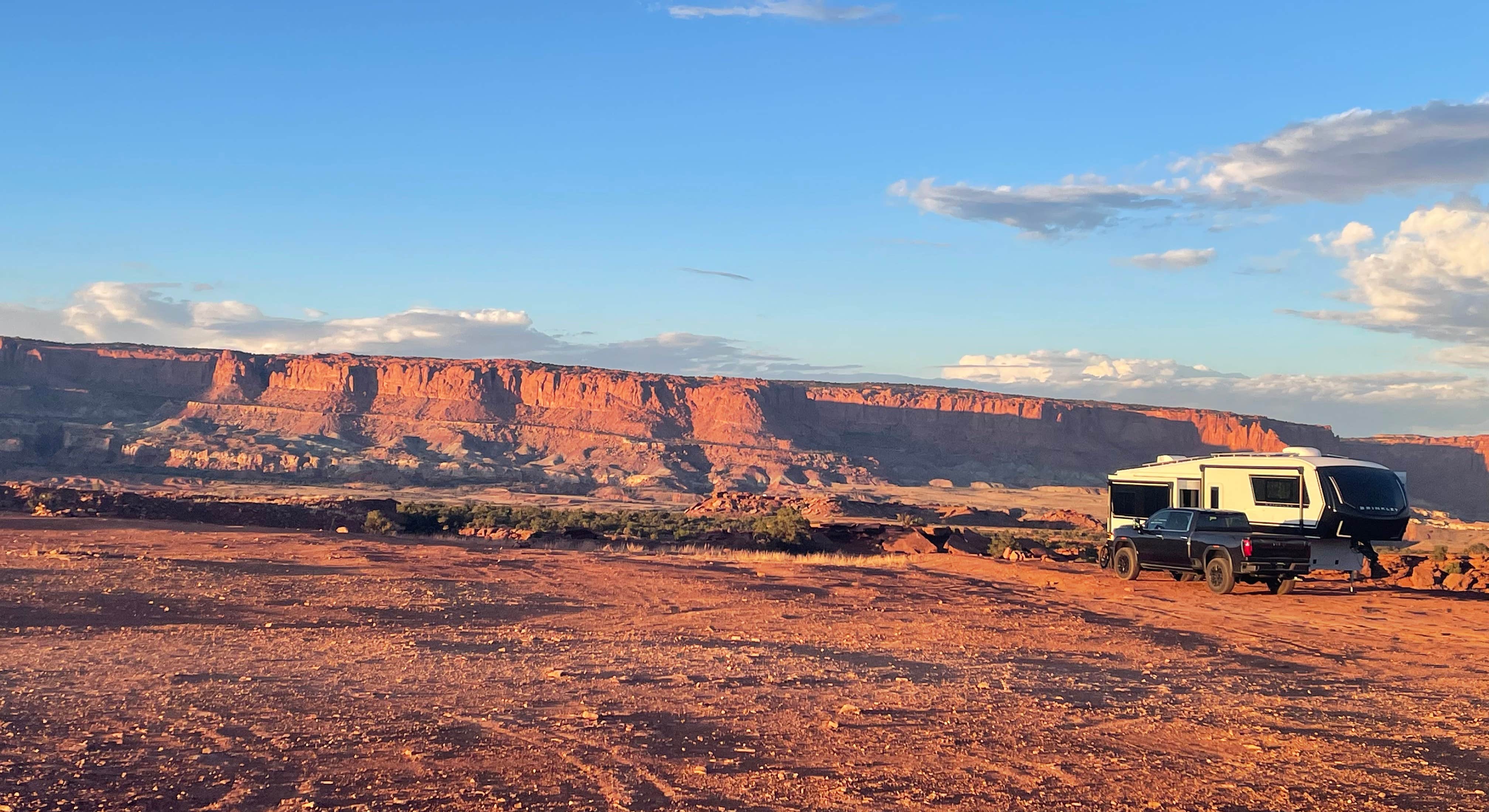 Photo by Lisa 47
Photo by Lisa 47
The Dyrt Community Insights 
Ranger Recommendations
The Dyrt Rangers (experienced campground reviewers) offer these insider tips and lesser-known insights for camping around Capitol Reef:
Fruita Campground - Best Sites:
"Try to reserve a site in Loop A or B if you can." Rangers note that Fruita's A and B loops sit among shady orchards near the river and trailheads, providing cooler temperatures and easy walking access to the visitor center and orchard picking. Loop C, by contrast, is the generator-friendly loop; it has less shade and sits closer to the road, so it's noisier. If you're tent camping at Capitol Reef and value quiet, loops A/B will offer a more tranquil experience. Sites along the outer edges of A and B loops (backing toward the orchards) are prime spots for privacy and evening deer sightings.
Hidden Gem Campground:
"Cedar Mesa Campground doesn't get enough love," one Dyrt Ranger writes. Many visitors never venture to this small southern campground, but those who do rave about the peace and beauty. Tucked against red rock ridges and often completely empty on weekdays, Cedar Mesa offers a true escape. Rangers highlight that it's an excellent spot for night photography - you can capture the Milky Way rising over the formations with zero light interference.
Free Camping Favorite:
Rangers consistently recommend the BLM dispersed camping areas along Highway 24 just west of the park entrance. "If you arrive without reservations and Fruita is full, head west on 24 and watch for pull-offs on BLM land - many offer incredible views and complete solitude for free." One ranger particularly recommends spots along Oak Creek Canyon Road and areas near Happy Valley Road.
Timing Tips:
"The first two weeks of September hit the sweet spot," suggests a longtime Capitol Reef visitor. "Summer heat breaks, fall colors haven't peaked yet but nights are pleasant, and crowds disappear after Labor Day." Several Rangers recommend early spring (late March-early April) for wildflowers without peak crowds. For photography, they suggest arriving at viewpoints before 7:00 AM for the best light and solitude.
Top-Rated Sites from The Dyrt Community
| Category | Top Pick & Rating | Key Highlights |
|---|---|---|
| Highest-Rated In-Park | Fruita Campground 4.6/5 stars | Shaded sites, flush toilets, river access, historic orchards, central location to attractions |
| Best for Solitude | Cedar Mesa Campground 4.7/5 stars | Free camping, rarely fills, incredible stargazing, access to Red Canyon, remote southern location |
| Most Recommended Private RV Park | Thousand Lakes RV Park 4.4/5 stars | Full hookups, clean facilities, friendly staff, swimming pool, views, cafe on-site |
| Best Free Alternative | BLM Dispersed Camping 4.3/5 stars | Numerous free sites, easy highway access, flexibility, remarkable desert views |
Community Insights and Recommendations
Fruita Campground Praise: The Dyrt community consistently praises Fruita for its unique combination of desert camping with surprising shade and amenities. Many reviewers emphasize the value of being able to walk to trailheads and enjoy fresh fruit from the orchards. The main complaint is limited privacy between sites, but most agree the location and facilities compensate.
Primitive Campground Adventures: Cathedral Valley and Cedar Mesa receive enthusiastic reviews from adventurous campers. Common themes include "worth the drive," "incredible solitude," and "best stargazing ever." Multiple reviewers note these campgrounds rarely have more than 1-2 occupied sites even on weekends. However, several emphasize the need for high-clearance vehicles and self-sufficiency.
Private RV Parks: Thousand Lakes RV Park and Wonderland RV Park in Torrey earn consistent praise for cleanliness, helpful staff, and beautiful settings. Several reviewers mention using these as comfortable bases while spending days exploring the park, appreciating the ability to return to full hookups and showers after dusty hikes.
Dispersed Camping Success: The Dyrt community shares numerous successful free camping trips on BLM land surrounding Capitol Reef. Popular spots mentioned include dispersed sites near Torrey, camping areas near Bicknell, and various pull-offs along Notom-Bullfrog Road. Reviewers emphasize the importance of arriving in daylight to scout sites and being fully self-sufficient.
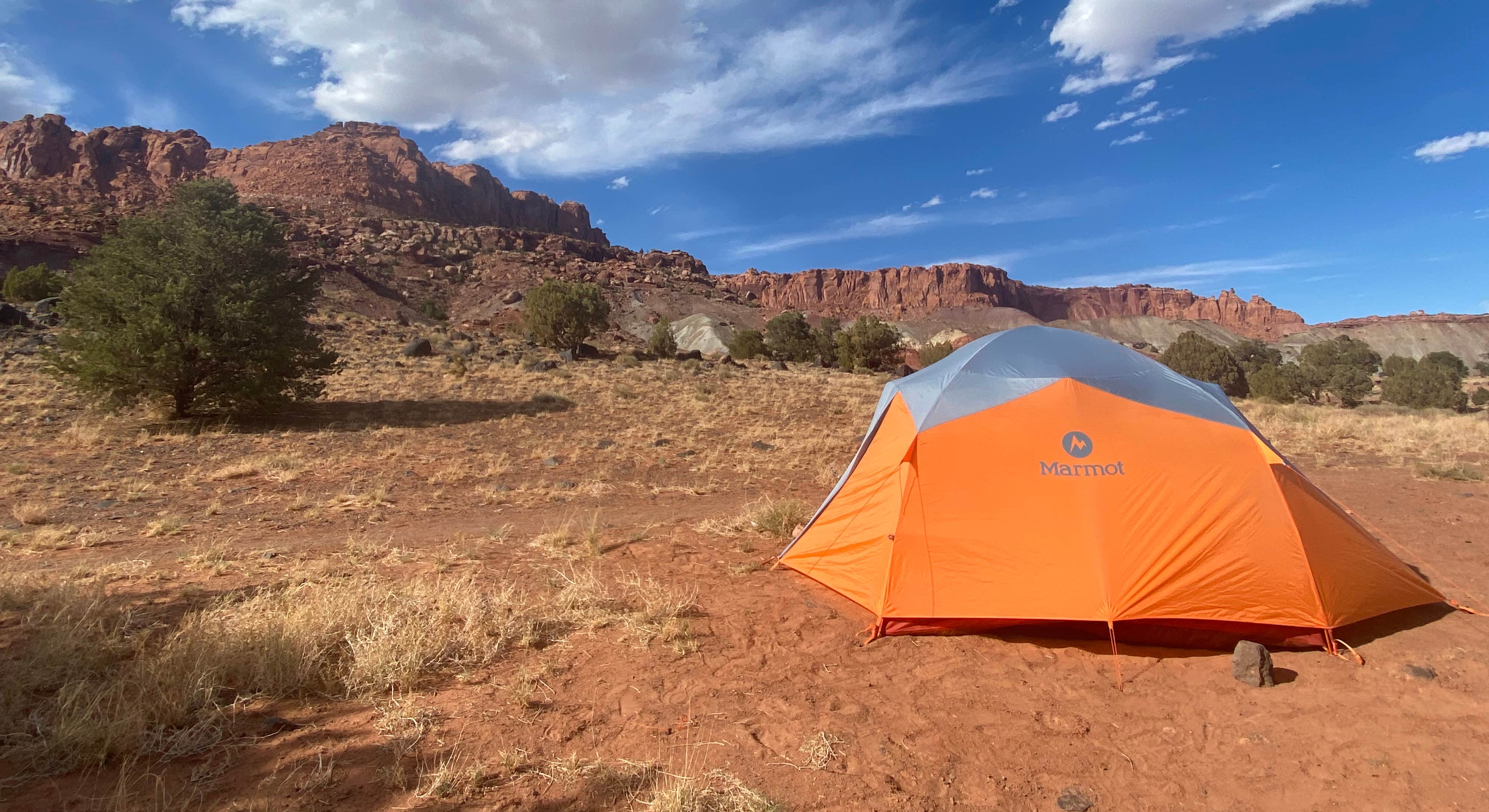 Photo by Jamie H
Photo by Jamie H
Responsible Camping Practices 
Camping in Capitol Reef's fragile desert ecosystem requires thoughtful practices to preserve this landscape for future generations:
Leave No Trace Principles:
Pack It In, Pack It Out: Take home everything you bring, including all trash, recycling, and food scraps. Even biodegradable items like fruit peels and nutshells should be packed out - they're not native to this desert and can take years to decompose while attracting wildlife. Micro-trash like cigarette butts, bottle caps, and food wrappers must also go home with you. Before leaving any campsite, do a thorough sweep for trash. Consider bringing a small trash bag on hikes to pick up any litter you encounter.
Respect Wildlife: Never feed any animals - this habituates them to human food and creates dangerous situations. Keep a safe viewing distance from all wildlife. Store food properly in sealed containers or vehicles to avoid attracting rodents, chipmunks, and deer to the campground. If deer wander through your campsite, give them space and wait for them to move along naturally.
Protect Cryptobiotic Soil: The dark, bumpy crust visible on desert soil is cryptobiotic crust, a living soil layer that takes decades to form and is easily destroyed by footsteps. This crust prevents erosion and fixes nitrogen in the soil. Always stay on established trails and designated camping areas. When at primitive sites or dispersed camping, set up on bare ground or rock, never on crusty areas. Educate children about stepping only on rocks or trails.
Fire Safety: Use only established fire rings where fires are permitted. Never gather wood in the park - purchase firewood in Torrey or bring your own from outside the area. Keep fires small and never leave them unattended. Completely extinguish fires before sleeping or leaving - drown with water, stir ashes, and drown again until cold to the touch. Be aware of fire bans, which commonly occur in summer due to dry conditions.
Water Conservation: Water is precious in the desert. At Fruita Campground, turn off taps completely after use and report any leaks to rangers. Take brief showers if showering at private campgrounds in town. When washing dishes, use minimum water and biodegradable soap, disposing of wastewater in designated utility sinks (not on the ground). If dispersed camping, carry out your grey water or distribute it widely over gravel/rocky areas at least 200 feet from water sources.
Cultural Resource Protection:
Capitol Reef contains irreplaceable cultural resources including Fremont culture petroglyphs, pioneer-era structures, and historic artifacts.
Petroglyphs and Pictographs: Look but never touch rock art. Oils from skin damage these ancient images. Do not make chalk rubbings or tracings. Do not add modern graffiti near ancient sites. Photograph respectfully from a distance.
Historic Structures: The Fruita Historic District includes buildings and orchards from early Mormon settlers. Stay on designated paths around structures. Do not climb on or enter closed buildings. Pick fruit only from designated trees and pay the honor-system fee.
Archaeological Sites: If you encounter pottery shards, stone tools, or other artifacts while hiking, leave them in place and report locations to rangers. Removing artifacts is a federal crime. Even well-intentioned artifact collection destroys the archaeological record.
Trail Etiquette:
- Stay on established trails to prevent erosion and protect vegetation
- Uphill hikers have right-of-way on narrow trails
- Step to the downhill side when yielding
- Keep noise levels moderate - many visitors come for solitude and quiet
- Respect trail closures, which protect sensitive areas or hazardous conditions
- If hiking with a group, walk single-file on narrow sections
- Avoid cutting switchbacks, which causes severe erosion
Waste Disposal:
Fruita Campground has trash dumpsters and recycling bins - use them properly and separate recyclables. Pack out all trash when at primitive campgrounds. Human waste must be disposed of properly:
- At Fruita, use the provided flush toilets
- At Cathedral Valley and Cedar Mesa, use vault toilets
- If dispersed camping or backpacking, dig catholes 6-8 inches deep at least 200 feet from water, trails, and campsites
- Pack out toilet paper in desert environments (it doesn't decompose quickly in arid climates)
- Never leave trash or food for wild animals
Frequently Asked Questions 
Do I need a reservation to camp at Capitol Reef? Fruita Campground requires reservations through Recreation.gov during the high season (March-October typically). Book exactly 6 months in advance at 10:00 AM Mountain Time for best availability, as popular dates fill quickly. In winter (November-February), Fruita operates as first-come, first-served though reservations are still available. The primitive campgrounds (Cathedral Valley and Cedar Mesa) are always first-come, first-served with no reservation system.
Are there RV hookups at Capitol Reef campgrounds? No. Fruita Campground has no hookups - it's dry camping only. Sites accommodate RVs up to about 40 feet, and the campground provides a dump station and water fill station for self-contained RVs. Generator use is permitted only in Loop C from 8:00 AM to 8:00 PM. For full RV hookups near Capitol Reef, stay at private campgrounds in Torrey like Capitol Reef RV Resort or Thousand Lakes RV Park, which offer water, sewer, and electric connections.
What's the best time to visit Capitol Reef? Spring (April-May) and fall (September-October) offer the most comfortable camping weather with mild days and cool nights. Spring brings wildflowers and orchard blossoms, while fall features golden cottonwoods and autumn colors. Summer (June-August) is hot but manageable if you start activities early and seek shade during midday. Winter (November-February) provides solitude and generally mild daytime temperatures, though nights are cold. Avoid holiday weekends in any season if you prefer fewer crowds.
Can I pick fruit from the Fruita orchards? Yes! Picking fruit from Capitol Reef's historic orchards is encouraged when fruit is ripe. Cherries ripen in June, apricots in July, peaches in August, and apples in September-October. Pay the self-service fee (typically $1-2 per pound) at honor boxes near the orchards. Follow posted guidelines: don't shake trees, climb trees, or damage branches. Enjoy eating fresh fruit, or take some home for pies. This unique opportunity connects visitors to the area's pioneer history.
Are campfires allowed at Capitol Reef? Campfires are permitted in designated fire rings at Fruita, Cathedral Valley, and Cedar Mesa campgrounds, subject to fire restrictions. Fire restrictions commonly occur during dry conditions (check at visitor center). You cannot gather firewood in the park - purchase it in Torrey or bring from outside the area. Never leave fires unattended and confirm complete extinguishment before sleeping or leaving. In backcountry areas outside established campgrounds, fires are prohibited - use camp stoves only.
Can I bring my dog camping at Capitol Reef? Yes, pets are allowed at Capitol Reef campgrounds, on roads, and in parking areas, but they must be leashed at all times. However, pets are not allowed on any trails, in the backcountry, or in buildings including the visitor center. This limits hiking opportunities significantly if traveling with pets. Consider the summer heat - asphalt and desert sand can burn paw pads. Provide plenty of water and shade for pets at the campground.
What should I do if I can't get a Fruita reservation? Several excellent alternatives exist: 1) Check Recreation.gov daily for cancellations, especially 7-14 days before your trip; 2) Try the primitive campgrounds (Cathedral Valley or Cedar Mesa) if you have appropriate vehicle and equipment; 3) Camp at dispersed BLM sites near Capitol Reef along Highway 24 or Notom-Bullfrog Road; 4) Stay at private campgrounds in nearby towns like Torrey, Bicknell, or Hanksville; 5) Visit during winter when Fruita availability is excellent. Many campers find dispersed camping enhances their Capitol Reef experience with solitude and flexibility.
Capitol Reef NP Planning Resources
Essential Capitol Reef Links
- The Dyrt Capitol Reef Campground Finder - Reviews and availability for campgrounds in and around Capitol Reef
- The Dyrt Magazine: Capitol Reef Camping Guide - Additional camping insights
- Utah's Mighty 5 National Parks Guide - Planning multi-park Utah camping and hiking trips
- Capitol Reef National Park Official Website - Current conditions, alerts, and regulations
- Recreation.gov Capitol Reef Reservations - Booking platform for Fruita Campground
- Capitol Reef Road and Weather Conditions - Current updates on road status and weather
- Utah Road Conditions - State highway information
Capitol Reef Reservation Timeline
| Time Period | Reservation Task | Platform/Details |
|---|---|---|
| 6 Months Before Trip | Book Fruita Campground | Recreation.gov (opens 10:00 AM MT on the same date 6 months ahead) Set calendar reminder for exact opening date |
| 4-5 Months Before | Reserve backup options and research primitive sites | Book private campgrounds if desired Research access to Cathedral Valley/Cedar Mesa |
| 1-2 Months Before | Check for cancellations and finalize plans | Monitor Recreation.gov for cancelled Fruita sites Check current park conditions and alerts |
| 2 Weeks Before | Check road conditions and finalize itinerary | Confirm primitive campground access conditions Plan hiking and activity schedule |
| 1 Week Before | Final gear check and weather forecast | National Weather Service forecast Review packing list and purchase firewood/supplies |
| Day Before Arrival | Check road conditions and download offline maps | NPS website for current conditions Download offline maps to phone |
Capitol Reef Camping Checklist
Reservations and Permits:
- Campground reservation confirmation (printed and digital copy)
- Park entrance pass or America the Beautiful Pass
- Photo ID matching reservation
- Backcountry permit if doing overnight backpacking (free at visitor center)
- Utah fishing license if planning to fish
Camping Gear:
- Tent with full rainfly and footprint
- Extra tent stakes (desert winds can be strong)
- Sleeping bag rated appropriate for season
- Sleeping pad with good R-value
- Extra blankets for cold nights
- Headlamp or flashlight with extra batteries
- Lantern for campsite lighting
- Camp chairs
- Tarp or shade structure for summer camping
Kitchen Items:
- Camp stove and plenty of fuel
- Lighter/matches in waterproof container
- Cooler with ice or ice substitute
- Large water containers (4-5 gallon capacity minimum)
- Cooking gear: pots, pans, utensils
- Eating utensils, plates, bowls, cups
- Can opener and basic tools
- Dish washing supplies (biodegradable soap, basin, sponge)
- Food storage containers that seal tight
- Trash bags and recycling bags
Clothing:
- Layering system for temperature swings
- Lightweight long sleeves for sun protection
- Long pants and shorts
- Wide-brimmed hat (essential)
- Warm jacket for evenings
- Warm hat and gloves (spring/fall/winter)
- Sturdy hiking boots
- Camp shoes or sandals
- Rain jacket and pants
- Extra socks and underwear
Safety and First Aid:
- Comprehensive first aid kit
- Prescription medications
- Sunscreen (SPF 30+) and lip balm
- Insect repellent
- Basic tool and repair kit
- Duct tape and paracord
- Fire extinguisher or water for fire safety
- Whistle for emergencies
- Emergency blanket or bivvy
Navigation and Communication:
- Printed park map and trail guides
- Offline maps downloaded to phone
- GPS device or compass
- Printed reservation confirmations
- Emergency contact list
- Portable phone charger or power bank
Vehicle and Backcountry (If Applicable):
- Spare tire (properly inflated) and jack
- Jumper cables or portable jump starter
- Basic auto tools
- Extra fuel for backcountry exploration
- Tire repair kit and air compressor
- Recovery boards or traction aids for soft sand/mud
- High-clearance vehicle for primitive campgrounds
Miscellaneous:
- Binoculars for wildlife and stargazing
- Camera with extra batteries/memory
- Star chart or astronomy app
- Books or games for downtime
- Small cash for honor-system payments (fruit picking, etc.)
- Notebook and pen
- Sunglasses with UV protection
- Day pack for hiking
By planning thoroughly and following park guidelines, your Capitol Reef camping trip will connect you deeply to one of Utah's most remarkable landscapes. Whether you're watching sunset illuminate the Waterpocket Fold from your campsite, biting into a fresh peach picked from Fruita's historic orchards, or stargazing from a remote primitive site, Capitol Reef offers memorable opportunities that blend natural beauty with pioneer history. Enjoy every moment of your adventure in this remarkable national park.

